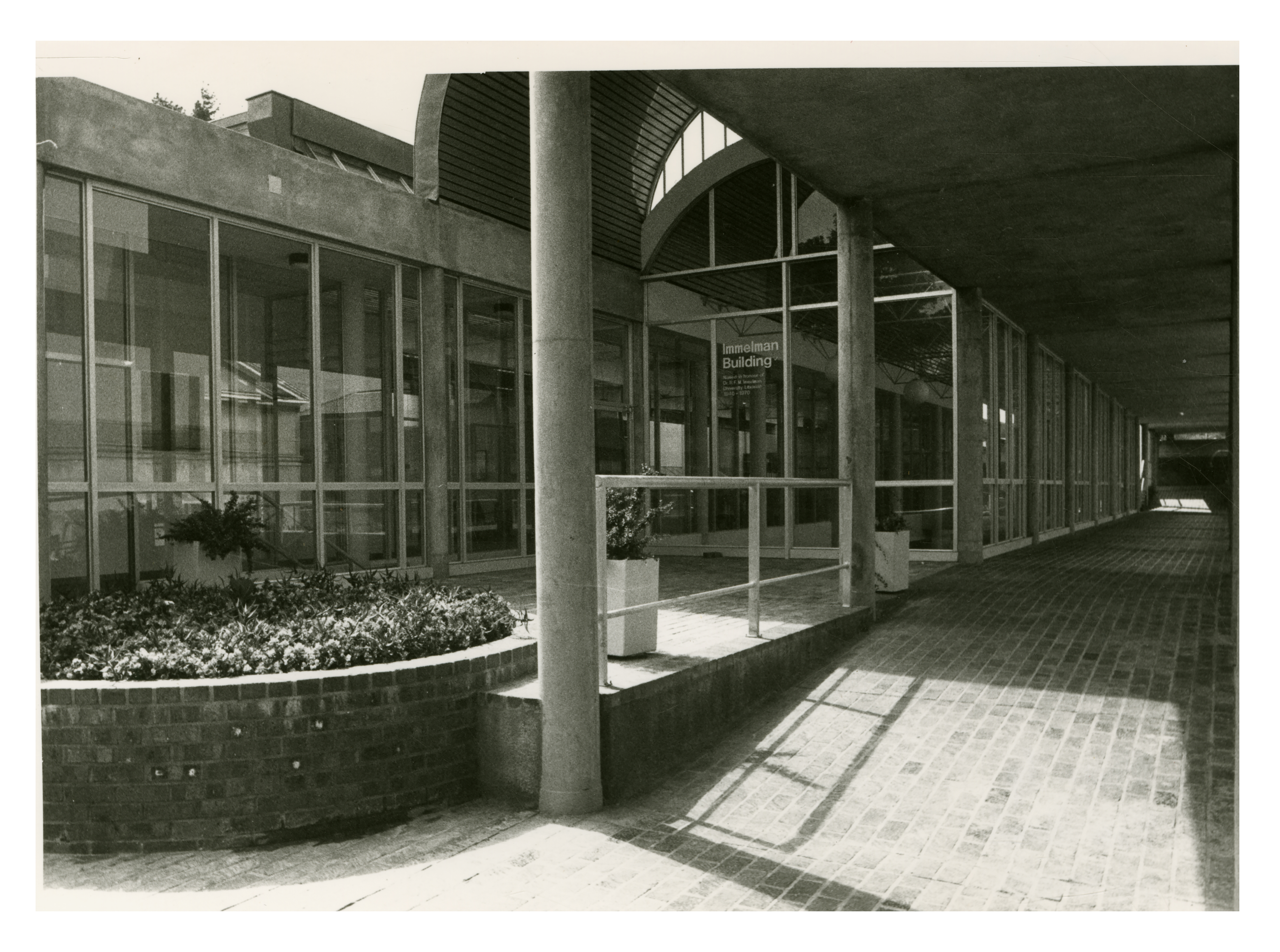Andrea Walker is an archivist in Special Collections, working with the AV Archive.
The AV Archive (AVA) used to live in the basement of the Jagger Library. It was one of the first areas to be salvaged following the fire. As the water used to douse the flames accumulated in the basement, a decision was made to expedite the recovery of the AVA through a digitisation project. There’s a great deal of important history in the AVA that will be far more easily accessible once it’s digitised. We have done a great deal of recovery work over the last two years, but it’s not always easy to see how far we’ve come.

If you’ve spent any time at all in Special Collections’ current accommodations, you’ll know that material is still stacked in crates and difficult to get at. Just walking past the windows of the Immelman 24/7 space, where the AVA has been housed for the past 18 months or so will show you exactly what I mean.
Walking in to work to see what seems like a never-ending mass of crates to work through is incredibly overwhelming. And frustrating. Crates are easily moved. We’re busy auditing the AVA. How do we know for certain that nothing has been overlooked?
I decided to set up a system to ensure that it would be easier to keep track of everything, while making everything less overwhelming. There are two processes going on simultaneously. The AVA audit and the digitisation. The latter is easy to deal with. An item is either marked done or it isn’t. That means that crates can be marked as done or not. As most of the material has already been digitised, it was simpler to mark which crates were not done.
The audit was a little more complicated to categorise. The audit is the start of the process, but there’s more work to be done once that’s complete. Given the realities of working out of crates, with limited storage space, I decided to go with practicality. All crates are categorised based on how easily accessible the material should be to the archivists. Category 1 is Access, for material that is yet to be audited.
Once the material is audited, there are two options. Some items have no information about the contents, some are very detailed. Items were split according to whether or not they would need to be consulted for additional metadata. If there was no need for the archivists to see the item again, they were considered Deep Store items. The items that would need to be consulted again were labelled Store.

During the salvage, items were removed from the shelves and placed in crates with the intent of emptying the store as quickly as possible. While working with the material it became clear that not all the crates had the same amount of material. Since I was now repacking the crates according to the categorisation of the items, I ensured that each crate had only a single layer of items so that they could be handled easily. This also meant that there would no longer be crates with only a few items in them.
This led to a build-up of empty crates and boxes, making the space seem even more cluttered and overwhelming. Also, the crates were all mixed together, as the AVA will eventually be turning Immelman back over to the students and moving down to Mowbray with the rest of Special Collections. Since we don’t know exactly when we’ll be moving out of Immelman, the crates needed to be rearranged for ease of access now.
Step 1 of rearranging, was to get rid of all the boxes and stack the empty crates out of the way. Just that made a difference. It felt as if an enormous weight had been lifted and I felt less stressed immediately. Luckily Vernon Bryant had come up from Mowbray to help us, because I did not realise how much all of that was adding to the problem and would probably not have thought to move it.
The second step was to consolidate the crates that still need to be categorised. Those, along with the “working crates” that are still being filled were placed right at my desk, for ease of access. In front of Susan’s desk, we placed the crates that were still in need of auditing.
As we work through these crates, the items in them will be placed according to whether or not there’s more metadata on the items. So once a crate has been audited it will be repacked into the working crates according to whether or not each item needs to be consulted for further metadata in the next phase. The items are also categorised according to whether or not they’ve been digitised.
Once VRTV have digitised a crate, they will be able to remove the Not Done label and place it in the appropriate stack, according to the colour-coded label that is already on it. This streamlines the process and makes everything far easier to find and keep track of.
The space is back to looking a bit cluttered and overwhelming, I admit. Tracking progress will be easier as stacks shrink and grow as each crate is completed and moved to its next destination. Also, the space will grow less cluttered and overwhelming as we continue. As crates are completed, the stacks will be consolidated into two stacks: Store and Deep Store. Once the audit is completed, we will move onto creating additional metadata, the completed Store crates will move to the Deep Store stack. And, eventually, the crates will move to shelving in archival storage space.
